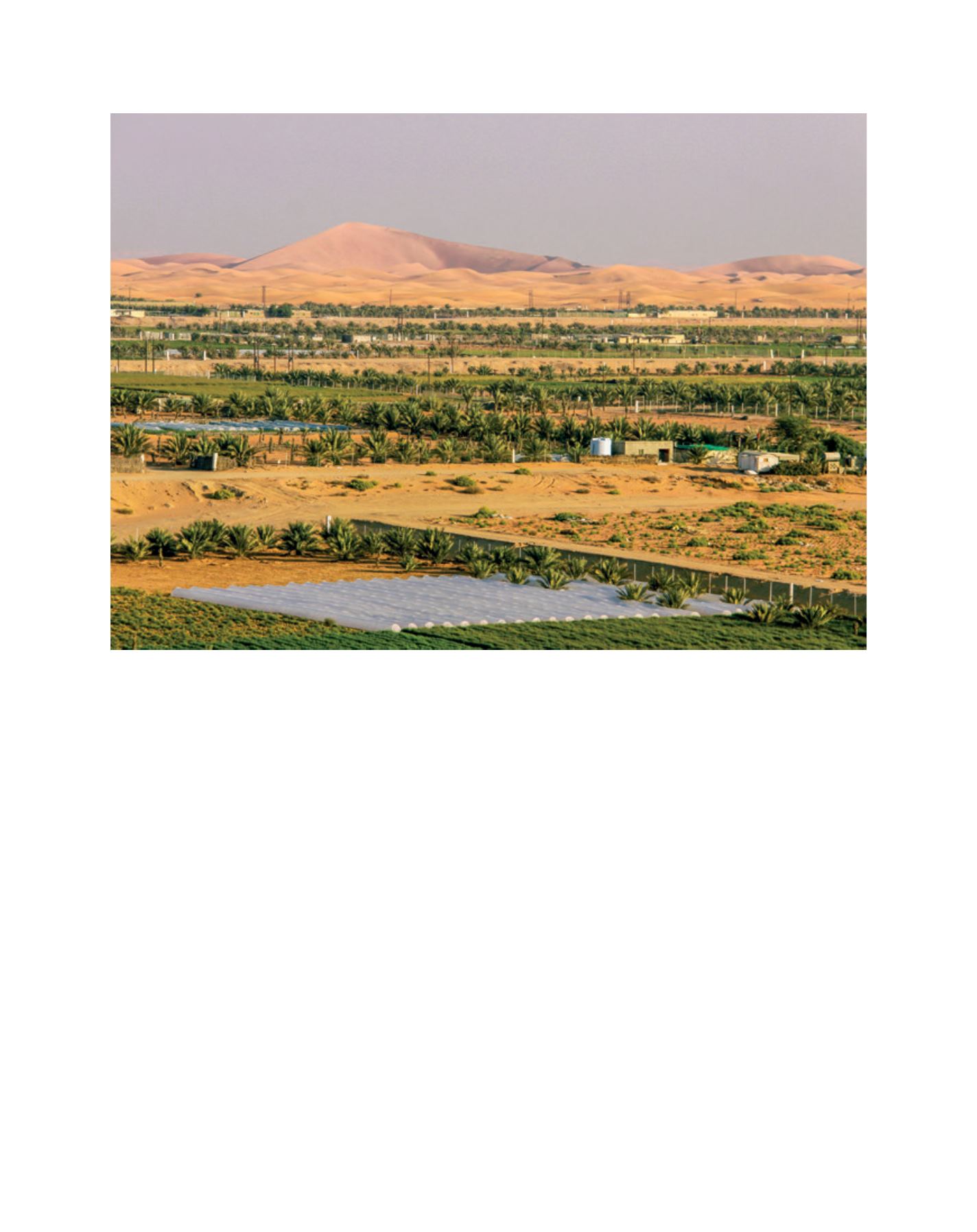

[
] 173
Due to increasing population growth and unsustain-
able land uses, arable lands are shrinking. Currently, each
human has only 0.22 hectares at their disposal; in 1960, that
figure was 0.5 hectares. The other major constraint to food
production is the development of soil salinity in irrigated
agricultural farms which is great concern as 40 per cent of
world food is produced from irrigated agriculture and 60
per cent from rain-fed agriculture. Currently, an estimated
20 per cent of irrigated lands is salinized to various degrees
and the global annual cost of salt-induced land degradation
in irrigated areas could be US$27.3 billion because of lost
crop production.
2
Globally about 1.6 million hectares are
lost annually due to salinization. With this pace of loss, the
irrigated area that is now contributing to agricultural foods
will be out of production in nearly 140 years — an alarming
situation since by 2050 we have to produce 70 per cent more
food to feed 2 billion extra mouths in addition to current 7.3
billion. The impact of climate change is another constraint to
achieve sustainability in food security. An Intergovernmental
Panel on Climate Change (IPCC) synthesis report
3
has
recognized the major impacts of climate change as food and
water shortages, increased displacement of people, increased
poverty and coastal flooding.
Overexploitation has shrunk arable lands for food
production and it may not be able to provide sufficient food
to meet human demand. Globally there are 1,500 million ha
cropland including 250 million ha (17 per cent) irrigated
producing 40 per cent of world food, and 1,250 million
ha (83 per cent) rain-fed agriculture contributing 60 per
cent of world food production.
4
Under a business-as-usual
scenario, by 2050 agricultural production must increase by
60 per cent globally — and almost 100 per cent in develop-
ing countries — to meet food demand alone for 9 billion.
1
To achieve such targets it is essential to understand soil
health constraints and develop problem-solving, innova-
tive ways which have long-term effects. This requires the
development and implementation of new agricultural and
food policies, and water, environmental and soil protec-
tion plans. The concept of climate-Smart Agriculture
(CSA) could be a step in the right direction. The CSA
being promoted by FAO
5
is not a single specific agricul-
tural technology or practice that can be universally applied.
It is an approach that requires site-specific assessments to
identify suitable agricultural production technologies and
practices. With this understanding, using innovative ways
to improve soil health, intensification in both irrigated and
rain-fed agriculture may be possible. However, increasing
agriculture lands may not be a viable option in many coun-
tries due to various factors including unfavourable terrains,
such as in African countries.
ICBA has experience in managing marginal lands with sandy, salt-affected soils through scientific and site-specific diagnostics
Image: ICBA
L
iving
L
and
















